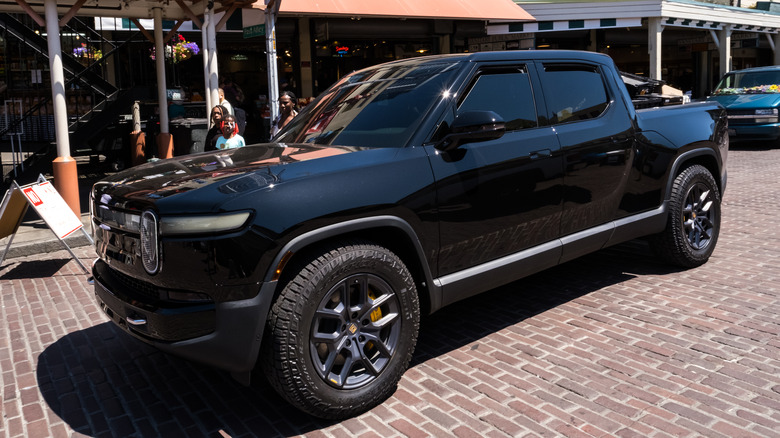Rivian's Crash Test Illustrates The Looming Problem With Guardrails
Guardrails are one of those safety features of the road that you only want to regard from a distance while driving by. We often overlook them until we actually need one because, as innocuous as they seem, what's on the other side tends to be worse. As the U.S. Department of Transportation describes, a guardrail can "deflect a vehicle back to the roadway, slow the vehicle down to a complete stop, or, in certain circumstances, slow the vehicle down and then let it proceed past the guardrail."
But the guardrail can't do its job if the vehicle is far too heavy for it and sails through the metal like it's a ribbon. A new study from the University of Nebraska, in partnership with the U.S. Army Engineer Research and Development, conducted a test in which a 7,000-pound 2022 Rivian R1T truck was sent crashing into a guardrail at 60 mph and a 25-degree angle, the idea being to replicate a common highway crash. The Rivian made mincemeat of the rail, quickly passing through until it struck a concrete barrier. While it may seem like that particular Rivian and similar heavy electric vehicles are the problem, many gasoline trucks are also in that weight class and might have a similar result.
We're going to need a bigger guardrail
That test showed the Rivian only stopping at a concrete barrier, whereas most guardrails are put in place to protect the vehicle from something worse, like a ditch or cliff. Similarly to how athletes are getting too big for their sport, many of today's vehicles might be too heavy for highway guardrails, designed decades ago for vehicles much lighter than today's. The Midwest Guardrail System (MGS), used in the test and throughout the country, was designed for vehicles up to 5,000 pounds. Many modern vehicles push that boundary, like the popular Ford F150, which typically ranges from 4,000 to 5,700 pounds in its latest models, with many SUVs and pickup trucks occasionally achieving a gross weight that far exceeds that.
The University of Nebraska test looked specifically at electric vehicles because their heavy battery packs can render them at weights 20 to 50 percent more than gas-powered vehicles, with lower centers of gravity. It's a concern to the authors, as research from the Midwest Roadside Safety Facility (MwRSF) suggests that "EVs are involved in run-off-road crashes at about the same rate and speeds as gasoline vehicles. That would mean an EV crashing into a roadside barrier could have 20 percent to 50 percent more impact energy."
It's difficult to draw overarching conclusions from the test, as it's just one test, and many variables are at play. In the current market, far more heavy gasoline vehicles are on the road than similarly-weighed electric ones. Still, most gasoline vehicles are not above 5,000 pounds. You can also get an EV under that weight. Further tests are clearly around the corner. But if gasoline and electric vehicles continue to increase in weight, those guardrails will begin to resemble floss and need some updates.

